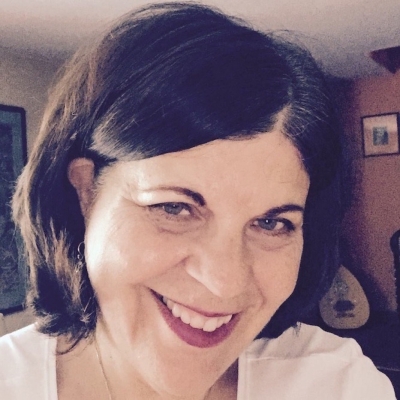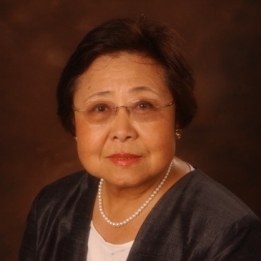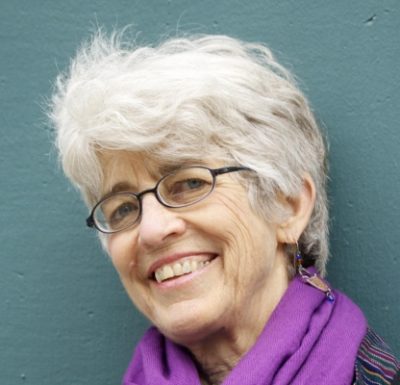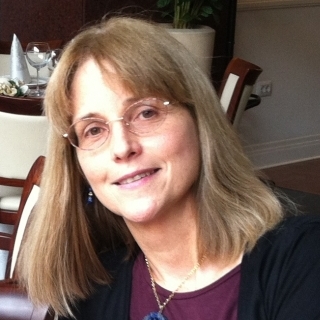
In this workshop we will hear about the activities of Buddhist women in both historical and contemporary contexts. The speakers will present examples from different cultural spheres, including China, Japan, and the US. Audience members will have opportunities to ask questions and participate in discussions about the inclusion of women in teaching and practice of the Dharma. Please register in advance.
Workshop Schedule
Date: Sept. 30, 2017 9:00am ~ 4:40 pm
Each presentation consists of 1 hour lecture, followed by 10 minutes Q & A.
| 9:00 – 9:10 | Welcome |
| 9:10 – 10:20 | 1st presentation, Beata Grant, Q & A Teacher, Traveler and Loyalist: The Poems and Gathas of Female Chan Master Jizong Xingche (b. 1606) |
| 10:20 – 10:40 | Break |
| 10:40 – 11:50 | 2nd presentation, Chun-fang Yu, Q & A Buddhist Nuns in Contemporary Taiwan |
| 12:00 – 1:30 | Lunch Break |
| 1:30 – 2:40 | 3rd presentation, Paula Arai, Q & A Leaders & Healers: Women and Japanese Buddhism |
| 2:40 – 3:00 | Break |
| 3:00 – 4:10 | 4th presentation, Susan Moon, Q & A Contemporary Western Female Teachers Three Profiles of Women Expressing Interdependence |
| 4:10 – 4:40 | Wrap-up discussion, Wendi Adamek |

Beata Grant
Professor, Washington University in St. Louis
Beata Grant is a professor of Chinese and Religious Studies at Washington University in St. Louis. Her primary area of research is religion, literature and gender in premodern China, with a special focus on women’s writing. She has published a variety of articles and books including Daughters of Emptiness: Poems of Chinese Buddhists Nuns (Wisdom Publications, 2003); The Red Brush: Women Writers of Imperial China (with Wilt Idema, Harvard Asia Center, 2004); Eminent Nuns: Women Chan Masters of Seventeenth-Century China (University of Hawai’i Press, 2009); Escape from Blood Pond Hell: The Tales of Mulian and Woman Huang (with Wilt L. Idema, University of Washington Press, 2011); and, most recently, Zen Echoes: Classic Koans with Verse Commentaries by Three Female Chan Masters (Wisdom Publications, 2017). She is currently completing an annotated translation of the poetry of Jizong Xingche, the subject of her talk.
Teacher, Traveler and Loyalist: The Poems and Gathas of Female Chan Master Jizong Xingche (b. 1606)
This talk will focus on the nearly one hundred poems and gathas included in the ocial “recorded sayings” ( yulu ) collection of the seventeenth-century female Chan master Jizong Xingche. These include poems of instruction as well as of friendship addressed to monks, nuns, laymen and laywomen; poems celebrating the joys of solitary travel and retreat in the mountains; poems of more personal reection on religious practice; and poems lamenting the fall of the Ming dynasty. In the absence of detailed biographical information about the woman about whom one contemporary wrote “monks, nuns, laymen, and laywomen ocked to her in droves: and there were none who did not wish to extend her an invitation to preach the Dharma,” Jizong Xingche’s verses aord us with a rare glimpse into the rich and multifaceted personal, religious and social life of an extraordinary female Chan master.

Chün-fang Yü
Professor Emerita, Columbia University
Chün-fang Yü was born in China and educated in Taiwan, graduating from Tunghai University with a major in English Literature and minor in Chinese philosophy. She received a MA degree from Smith College in English Literature and a Ph.D. from Columbia University in Religion, specializing in Chinese Buddhism. She taught at Rutgers, the State University of New Jersey from 1972 to 2004, having been promoted from assistant professor to Professor II, the highest rank at Rutgers. She was the chair of the Department of Religion 2000-2004 when she retired with emerita status and assumed teaching at Columbia University. She is the Sheng Yen Professor in Chinese Buddhist Studies, a faculty member in both Department of Religion and Department of East Asian Languages and Cultures from 2004-2013 and retired as emerita professor. She is the author of The Renewal of Buddhism in China: Chu-hung and the Late Ming Synthesis (Columbia University Press, 1981), Kuan-yin: The Chinese Transformation of Avalokiteśvara (Columbia University Press, 2001) which was translated into Chinese and published in Taiwan (2009) and China (2012), and Passing the Light: The Incense Light Community and the Buddhist Nuns in Contemporary Taiwan (University of Hawaii Press, 2013).With Susan Naquin, she co-edited Pilgrims and Sacred Sites in China (University of California, Berkeley, Press, 1992). Her article, “Guanyin and Dizang: The Creation of a Chinese Buddhist Pantheon”, appeared recently in Asiatische Studien (2016), vol. 70, Issue 3, pp. 757-796. She is currently writing “Chinese Buddhism: A Thematic History”, a textbook for college students and general readers
Buddhist Nuns in Contemporary Taiwan
Nuns in Taiwan are inheritors of a tradition of some 1,600 years. Buddhism has been undergoing a renewal in Taiwan since the 1980s. Most Buddhist leaders, following the teachings of Yinshun (1906-2005), promote socially engaged “Humanistic Buddhism.” Two of the most noticeable features of Taiwanese Buddhism are the overwhelmingly greater number of nuns in comparison to monks and their high level of education. The ratio of nuns to monks is four to one. Moreover, it is estimated that about one-third of Taiwanese nuns younger than thirty years old have either a diploma from a five-year technical school or a college degree. Some of them have gone on to graduate studies either in Taiwan or abroad and obtained advanced degrees. In comparison to nuns in traditional China, both phenomena are unprecedented. Like professional women in Taiwan, nuns engage in teaching, social work, research and writing, editing magazines, and producing radio or television programs, as well as managing temples using modern management techniques, like the executives of companies. Although it has now generally been accepted that nuns are playing a crucial role in the revival of Buddhism in Taiwan, it is difficult to study the phenomenon in a comprehensive way. One reason is the lack of data about the entire population of nuns. Therefore I used one community of nuns, the Incense Light Bhiksuni Sangha, as a case study. The Incense Light nuns are a single sex community. I lived with them for eight months in 1998 and carried out extensive interviews with the abbess and about thirty nuns of different generations in addition to documentary materials I gathered about the group. I have gone back several times since then to do follow-up studies. By examining its composition, recruitment patterns, training, and activities in some detail, I think I have succeeded in gaining a more concrete picture of contemporary Taiwanese nuns. From what the nuns say and do, it is possible to discern how Humanistic Buddhism is understood and practiced by these nuns.

Paula Arai
Ph.D. (Japanese. 荒井ポーラ)
Paula Arai, author of Women Living Zen: Japanese Buddhist Nuns (Oxford University Press, 1999) and Bringing Zen Home: The Healing Heart of Japanese Buddhist Women’s Rituals (University of Hawaii Press, 2011), received her Ph.D. in Buddhist Studies from Harvard University. Arai has published her research on Japanese Buddhism in numerous journal articles, chapters in edited volumes, and regularly presents at national and international venues. Her research has received generous support from Fulbright and American Council of Learned Societies Fellowships, and grants from the Mellon Foundation, Reischauer Institute of Harvard University, Vanderbilt University, Hong Kong University of Science & Technology, Carleton College, the American Academy of Religion, and ATLAS (Awards to Louisiana Artists and Scholars). Her current book project, Art of Enlightenment: Black Holes, Buddhas, and the Heart Sutra, includes curating exhibitions of paintings by the Japanese contemplative scientist featured in the book. Arai is currently an associate professor of Buddhist Studies at Louisiana State University.
Leaders & Healers: Women and Japanese Buddhism
The prodigious stream of Japanese Buddhist women in roles of leadership and healing extends the length of Japanese Buddhist history. This presentation will highlight a ritual that helped galvanize Sōtō Zen nuns on the eve of the twentieth century and feature twentieth-century leaders who institutionalized their disciplined commitments. It will also offer a window into the creative healing practices that characterizes women’s activity in the home.

Susan Moon
Dharma Teacher and Author, Everyday Zen Sangha
Susan Moon is a writer, editor, and lay teacher in the Soto Zen tradition. She has been practicing for 40 years, in the family lineage of Shunryu Suzuki Roshi, at Berkeley Zen Center, San Francisco Zen Center, and now with Everyday Zen, ever since its founding in 2000 by Zoketsu Norman Fischer. She has been teaching Zen retreats since she received “lay entrustment” (authority to teach) from Zoketsu in 2005. She leads Zen retreats for women and for mixed groups in various settings, in the U.S. and internationally, in Europe and Mexico. She also teaches writing and leads writing retreats. For many years she was the editor of Turning Wheel, the Journal of Socially Engaged Buddhism . Her books include the humor book The Life and Letters of Tofu Roshi;; This Is Getting Old: Zen Thoughts on Aging with Humor and Dignity [ http://www.shambhala.com/this-is-getting-old.html ]; Being Bodies: Buddhist Women on the Paradox of Embodiment, with Lenore Friedman ;; Not Turning Away: Writings on Socially Engaged Buddhism;; The Hidden Lamp: Stories from 25 Centuries of Awakened Women , with co-author/editor Florence Caplow [ http://www.wisdompubs.org/book/hidden-lamp ], and most recently, What Is Zen: Plain Talk for a Beginner’s Mind , with Norman Fischer. She lives in Berkeley, California.
Contemporary Western Female Teachers-Three Profiles of Women Expressing Interdependence
My talk on contemporary women teachers in the West will be based on my personal experience with Buddhist practice, primarily Zen, over the last 40 years. When I started practicing (Zen) Buddhism, in the1970s, there were very few Western women who were recognized as teachers. Now there are at least as many Western women teachers as men, many of them in positions of leadership. The liturgy has changed to become more gender inclusive. At the same time, not coincidentally, many American Buddhist sanghas have brought forward a community concern about social and environmental justice, and there is increased support for practitioners who are also householders in lay life. Women teachers have had an important part in these changes. This presentation will focus on the changes I have noticed for women teachers in my own larger sangha of the Shunryu Suzuki Soto Zen lineage, and on the lives and teaching of a few individual women teachers I have known, from different Buddhist traditions, each of whom exemplifies a different aspect of what female Western Buddhist teachers are bringing to the dharma today.

Wendi L. Adamek
Associate Professor, University of Calgary
Wendi L. Adamek is Associate Professor in the Department of Classics and Religion at the University of Calgary and holder of the Numata Chair in Buddhist Studies. Her research interests include medieval Chinese Buddhism, Buddhist archeology, and living systems theory. Her forthcoming book Practicescape: The Buddhists of Baoshan centers on a seventh-century community in Henan, China. Previous publications include The Mystique of Transmission: On an Early Chan History and its Contexts (AAR Award for Excellence in Textual Studies, 2008) and The Teachings of Master Wuzhu (2011). Born in Hawai’i, she earned her degrees at Stanford University and has held research fellowships at Kyoto University (Fulbright), Peking University (NEH, Fulbright), the Stanford Humanities Center, and the Institute for Advanced Study, Princeton.
Organized by the Dharma Drum Mountain Vancouver Center and co-sponsored by Numata Chair in Buddhist Studies, Department of Classics and Religion, University of Calgary; RHNHFF Program in Buddhism and Contemporary Society, Department of Asian Studies, University of British Columbia.